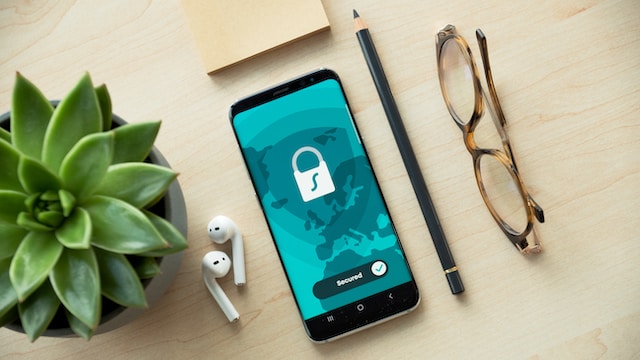As we get more and more connected, with our computers, laptops, tablets, devices and even appliances capable of connecting to the net, the issue of home cyber security is becoming increasingly important. The simple fact is, in a digital age, a cybercriminal can cause as much — and potentially more — damage to your home than traditional burglary or vandalism. With a cyber attack occurring roughly every 39 seconds in the USA alone, 1 in 3 Americans are affected every year. Every device you own that is connected to the internet is a potential cyber security risk if it’s not properly safeguarded. In this article, you’ll learn about what cyber security is, what personal cyber insurance is, and some of the benefits of having this kind of insurance policy.
Understanding the growing concern of cyber security
Before learning about personal cyber insurance, it’s important to know exactly what cyber security is. Simply put, cyber security protects your computer, mobile devices, networks, and electronic systems from attack. Most people think of cyber security as a business or individual issue, but it can also be a household concern, which means you can insure against it.
Personal cyber insurance is a type of liability insurance designed to help you recover from cyber security threats, including online fraud and cyberbullying. It’s important to note here that personal cyber insurance doesn’t prevent these threats from happening — it simply helps you recover from them when they do happen.
Cybersecurity and home insurance
Fortunately, you can integrate cybersecurity into your home insurance. This way, you have a policy that provides complete coverage, so you don’t have to fit in an extra policy and juggle multiple payments. That said, there are some things you will need to bear in mind when you decide to integrate personal cyber insurance into your home insurance policy.
Mitigating financial losses: Personal cyber insurance can help you recover financial losses resulting from a cyber attack, whether it’s lost income due to a hacked social media account, losses resulting from a breach in your online accounting, and more. Personal cyber insurance can also cover the cost of virus removal and device repair.
Protecting yourself against identity theft and fraud: Identity theft and fraud can result in unauthorized credit card or bank account transactions. Personal cyber insurance can be used to provide reimbursement for these transactions and cover potential legal fees associated with this type of fraud.
Reimbursement for data recovery and restoration: When you lose data due to a cyber attack, you can be reimbursed for the amount you spend recovering and restoring your data so that you can bounce back quickly.
Cyber extortion and ransomware attacks: Cyber extortion and ransomware attacks are a way for hackers to extort money from their victims, whether by threatening to release personal data to particular recipients or blocking access to a computer, network, website or what have you. Personal cyber insurance can be used to reimburse the ransom or extorted amount.
Expert cybersecurity services and support: Integrated insurance policies don’t just provide financial reimbursement after cyber attacks — they also offer access to expert cybersecurity services and support. This way, you get additional help navigating and responding effectively to cyber threats.
Personal cyber insurance: What does it cover?

Personal cyber insurance is not typically a standalone policy but rather an add-on to homeowner’s insurance. The point of this type of insurance — like any insurance policy — is to reimburse the holder for their financial losses, the difference being that these losses center around personal data instead of physical belongings. Since personal data is not a tangible belonging, it may be unclear how personal cyber insurance could be helpful to anyone. Nonetheless, it can help you financially recover from a cyber attack in a very tangible way.
So, what kinds of cyber attacks can personal cyber insurance cover? Let’s take a moment to clear that up:
- Cyber attacks. Your policy can provide financial reimbursement for repairs and data recovery from viruses. This reimbursement may also include the costs associated with reprogramming your devices, including desktops, WiFi-enabled home security systems and smart home appliances, laptops, tablets, smartphones, and routers.
- Cyberbullying. It may seem odd to have insurance for cyberbullying. Still, you have to remember that this kind of bullying can result in wrongful termination from a job, relocation, private tutoring, and other things that either cost money or result in losing money. As such, this type of insurance policy can provide coverage, and other forms of assistance, to aid in the recovery process.
- Cyber extortion. This kind of insurance coverage helps you recover from ransomware attacks or other types of cyber extortion, as well as provides expert assistance in regaining control of your computer, devices, or data systems.
- Data breach. This type of coverage centers more on providing expert services than financial reimbursement. These services can help you re-secure your personal data if lost, stolen, or otherwise exposed and operate safely going forward.
- Online fraud. This type of home cyber protection covers identity theft, unauthorized credit and bank transactions, phishing scams or other types of fraud that result in direct financial loss. You can also expect coverage for indirect losses that may result in engaging expert services to help you.
Building your digital fortress and reducing cyber risks
While personal cyber insurance can help you mitigate the financial damage of cyber attacks, it’s really only half the equation. The other half of that equation involves personally ensuring your data is secure. Here’s what you need to do so that you don’t have to claim on your personal cyber insurance policy:
- Assess your digital risks. Anyone, who is in any way connected to the internet, will come with a slew of digital risks whether they realize it or not. Did you opt to save your login information for your social media accounts? That’s a digital risk. Do you store your ID and credit cards in apps on your phone or tablet? That’s a digital risk. So, take time to think about ways you leave your data open to cyber threats. If you know where your risks are, you can take steps to fix them. This can mean memorizing your login details instead of saving them, taking your ID and credit cards or store cards off your devices, and so on. Just because something is convenient doesn’t necessarily mean it is safe.
- Secure your home network. The next step in protecting your data is to secure your home network. There are a few things you can do toward this end, including: changing your WiFi password regularly, keeping your firmware up to date, restricting remote access to your network (including disabling Universal Plug and Play and WiFi Protected Setup, if these apply), using a Guest Network to allow anonymous network use. Likewise, it’s a good idea to keep security in mind when using your network. As soon as a device is connected to your WiFi, it becomes a potential risk. So, if your devices don’t need to be connected at all times, then disable their WiFi connection when you aren’t using it.
- Safeguard personal devices and data. There are a number of ways you can protect your data, including doing the following: using strong passwords, updating your security software regularly, scanning your devices for potential threats regularly, using common sense, ensuring you have a secure connection when shopping or paying for anything online, and backing up your files to external storage.
- Strengthen passwords and authentication. Sometimes the simplest way to safeguard your data is to use stronger passwords. This may be annoying, but creating a unique password that combines letters, symbols, and numbers, makes them more difficult to hack. You can also use multi-factor authentication to strengthen your online accounts and make them more challenging to hack.
- Educate family members on cybersecurity best practices. If you live in a household with other family members, it’s a good idea to make sure they know how to recognize or avoid potential cyber threats. With children especially, it’s a good idea to take time to teach them about safe online behavior. If you use a shared network or even shared devices, you may want to make sure that you sign out of any website that requires a login when you aren’t personally using them.
-
Dealing with cybersecurity incidents
Dealing with a cybersecurity incident is probably not at the top of your bucket list, but chances are pretty good that you will have to run that particular gauntlet at some point. As such, it pays to know what you need to do to handle the situation when it arises. Here is a quick look at the steps you will need to take to mitigate the potential impact of a cybersecurity threat:
- Respond immediately. Cyber attacks won’t resolve themselves if left alone — time is usually of the essence in this situation. By disconnecting the affected device from your network, for example, you can keep the potential damage to a minimum and reduce its spread. If your online banking or credit card accounts have been hacked, you first need to freeze the account and then report the issue to the bank or credit card provider.
- Contact your insurance provider. If you have personal cyber insurance, the next thing you will need to do is report the incident to your insurance provider and start the process of making a claim. This way, you can be reimbursed for any financial losses and get expert help in recovering and protecting your data.
- Document the incident. Aside from filing a claim with your insurance provider, it’s a good idea to document the incident as completely as possible. Make notes about the nature of the incident, what was affected, the impact of the incident, what action was taken and what losses were incurred as a result. This documentation will help you to secure reimbursement through your insurance.
- Seek expert assistance. Most people aren’t cybersecurity experts — if this sounds like you, then it’s a good idea to engage cybersecurity professionals to investigate, contain and mitigate the effects of the incident so that they cause the minimum amount of damage.
- Review and update your personal cyber insurance policy. If your policy is effective as it is, that’s wonderful. After a cyber security incident, however, you may want to review and possibly update your policy to fill in any gaps and enhance your coverage for the future.
Evolving cyber risks and insurance solutions in the future

Cyber security is ever-evolving because cyber security threats are also ever-evolving. In short, hackers are always trying to build a better mousetrap. It’s important to stay informed about emerging cyber threats, specifically those that target individuals and homeowners. Fortunately, ways to deal with these threats arise almost as fast as the threats themselves do. After all, banks, credit card companies, online businesses, app creators, and so on would be in trouble if it became known that they couldn’t safeguard their customers’ data.
Cyber threats for homeowners
Anyone connected to the internet is a potential victim of a cyber attack, and homeowners are frequently targeted because their security measures and practices aren’t usually as solid as those used by businesses or organizations. Some of the more common cyber threats for home users include ransomware, information theft, data breaches, malicious ads that come loaded with viruses, and remote access tools that allow hackers to gain entry to their victim’s computer. While these threat types are common, new versions are always possible, so it is a good idea to keep on top of these emerging threats and learn how to deal with them. Knowledge is power.
Tech-savvy home cyber security
Fortunately for ordinary people, cybersecurity evolves alongside the potential threats they are designed to guard against. While some of these advances are beyond the average homeowner’s means, some are not. Here’s a list of a few of the latest major technological innovations in cybersecurity:
- Hardware authentication. This is a way of securing your devices from unauthorized use. It can include measures like password login, PIN entry, pattern use and biometric identification. The limitation of hardware authentication is that your devices can be stolen or lost, thus posing login issues for you across your various apps.
- Automated networks. Automating your network so that it conducts scans and monitors all connected networks and devices for potential threats can enable your network to report issues in real-time. You can also set your network to update your defense systems automatically, such as your firewall, anti-virus program, diagnostic systems and so on. This way, your network’s line of defense can keep up with current threats.
- Blockchain. This is touted as being one of the strongest cybersecurity technologies. Simply put, blockchain cybersecurity works by maintaining a record of transactions between computers that are linked in a peer-to-peer network and thus share resources.
- Zero-trust model. This model is built on the principle of maintaining strict access controls to your devices and trusting no one — even if they are in your network. The idea is to use authentication methods for all network access.
How home insurance policies have adapted to changing risks
By the nature of their business, insurance providers must modify their coverage to address emerging risks, such as cybersecurity, to stay ahead in their field. Considering that even refrigerators can be connected to the internet these days, the possibility of a cybersecurity threat grows even as our connectivity does. So, it’s a good idea for homeowner’s insurance providers to offer a policy that covers this growing peril. This peril is typically lumped under liability insurance, often offered as an add-on to your existing policy.
A.I in cyber insurance
AI is intended to mimic human performance by learning, drawing conclusions, analyzing data, and even engaging in dialogue with people, among other things. While AI does not have consciousness in the way humans do, it’s widely thought that a level of cognitive awareness that extends to predicting and dealing with cyber attacks may be in the near future.
In terms of the use of AI in the insurance industry, there are a few very definite benefits:
- Faster transfer of information between the claimant and the provider.
- Consistent performance
- Decisions are better, are arrived at faster, and are based purely on hard data.
- AI has expanded access to data and industry insights.
In short, AI — when used in cyber insurance — can process and transfer information faster, provide consistent performance every time, and make decisions without bias.

Cyber security is a threat that grows the more connected we become. Since much of our lives are now conducted online, and even our household appliances can be connected to the internet, the potential for a cyber-attack is tremendous. There are means to counteract and prevent cyber security threats, but many remain financially devastated after such an attack. Fortunately, personal cyber insurance policies have emerged as a way of helping victims of a cyber-attack recoup their losses and move forward.




